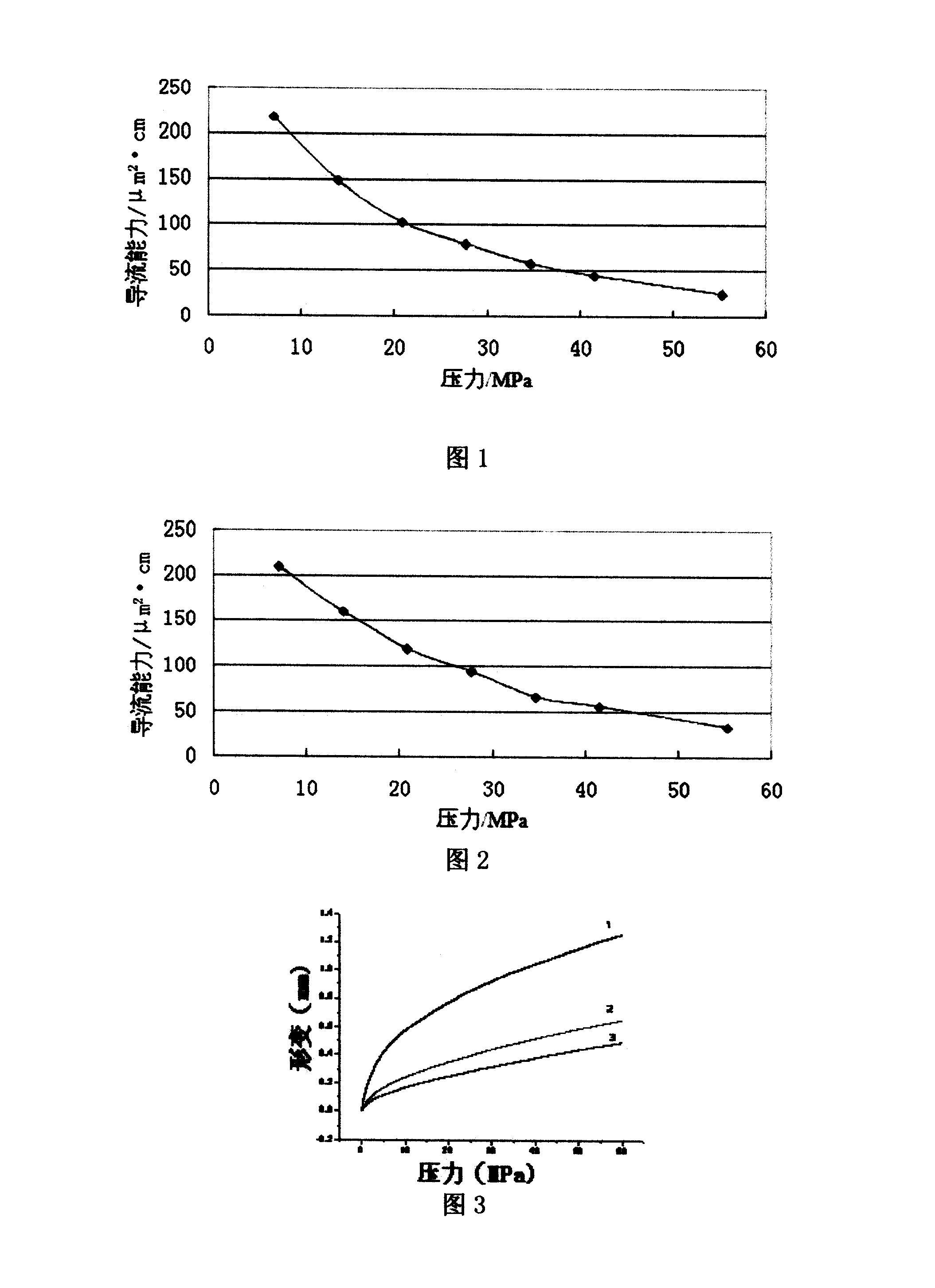Method and technique for preparing low-density propping agent
A preparation process and proppant technology, which is applied in the field of low-density proppant preparation, can solve the problems of high construction cost and complicated preparation process, and achieve the effects of improving deformation resistance, high strength, and not easy to evacuate cracks
- Summary
- Abstract
- Description
- Claims
- Application Information
AI Technical Summary
Problems solved by technology
Method used
Image
Examples
Embodiment 1
[0041] Take 50 grams of walnut shell particles that have been crushed and ground into 20-40 meshes and placed in a pressure vessel;
[0042] Prepare an ethanol solution of thermosetting phenolic resin with a content of 60%, and immerse the particles in the solution; close the pressure vessel, raise the temperature to 50°C-60°C, add nitrogen pressure to 1Mpa, and maintain it at 50°C-60°C for 2 hours; filter off the excess resin solution , heat up to 150°C to 180°C for curing;
[0043] Add 5 grams of epoxy resin and 0.5 grams of polyethylene polyamine into the container, stir and heat up to 120°C for curing;
[0044] The particles are taken out and sieved with a 20-40 mesh vibrating sieve, and the particles on the sieve are crushed and sieved again. Make its bulk density 0.65g / cm 3 ~1.10g / cm 3 , the true density is 1.10g / cm 3 ~1.50g / cm 3 .
[0045] See Figure 1 and Figure 3 for flow conductivity and deformation resistance.
Embodiment 2
[0047] Take 50 grams of walnut shell particles that are crushed and ground into 20-40 meshes and placed in a container;
[0048] Prepare an ethanol solution of thermosetting phenolic resin with a solid content of 60%, immerse the particles in the solution; close the container, raise the temperature to 50°C to 60°C, maintain it at 50°C to 60°C for 2 hours, filter off the excess resin solution, and heat up to 150°C to 150°C Curing at 180°C;
[0049] Cool to below 80°C, add 5 grams of epoxy resin and 0.5 grams of polyethylene polyamine solution mixed evenly into the container, stir and heat up to 120°C to solidify;
[0050] The particles are taken out and sieved with a 20-40 mesh vibrating sieve, and the particles on the sieve are crushed and sieved again. Make its bulk density 0.65g / cm 3 ~1.10g / cm 3 , the true density is 1.10g / cm 3 ~1.50g / cm 3 .
[0051] See Figure 2 and Figure 3 for the conductivity and deformation resistance.
Embodiment 3
[0053] Take 50 grams of walnut shell particles that have been crushed and ground into 20-40 meshes and placed in a pressure vessel;
[0054] Prepare an acetone solution of epoxy resin or phenolic resin with a solid content of 60%, and immerse the particles in the solution; close the pressure vessel, raise the temperature to 50°C-60°C, add nitrogen pressure to 1Mpa, and maintain at 50°C-60°C 2h; filter off excess resin solution, heat up to 150°C-180°C for curing;
[0055] Add 5 grams of phenolic resin and 0.5 grams of polyethylene polyamine into the container, stir and heat up to 120°C for curing;
[0056] The particles are taken out and sieved with a 20-40 mesh vibrating sieve, and the particles on the sieve are crushed and sieved again. Make its bulk density 0.65g / cm 3 ~1.10g / cm 3 , the true density is 1.10g / cm 3 ~1.50g / cm 3 .
PUM
| Property | Measurement | Unit |
|---|---|---|
| density | aaaaa | aaaaa |
| density | aaaaa | aaaaa |
Abstract
Description
Claims
Application Information
 Login to View More
Login to View More - R&D
- Intellectual Property
- Life Sciences
- Materials
- Tech Scout
- Unparalleled Data Quality
- Higher Quality Content
- 60% Fewer Hallucinations
Browse by: Latest US Patents, China's latest patents, Technical Efficacy Thesaurus, Application Domain, Technology Topic, Popular Technical Reports.
© 2025 PatSnap. All rights reserved.Legal|Privacy policy|Modern Slavery Act Transparency Statement|Sitemap|About US| Contact US: help@patsnap.com

